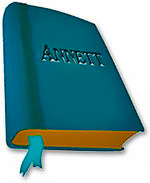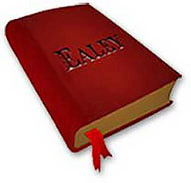There are six reasons to claim George Healey of the 1854 burial and death certificate as "our" George:
-
The "abode" given in the burial register. We know that George and family have been living at 7 Kents Cottages South Row at least since the 1851 census. As recently as the 31st of December 1853 (only four weeks before the burial entry) George writes a letter addressed from here, and on the 13th of February 1854, two weeks after the burial, baby Euphemia is born at 7 Kents Cottages. It's plausible that "7 South Row" is a contraction of this address.

-
The age, forty-two, fits with what we know about George's approximate birth date.
-
George is declared to be deceased when young Euphemia's birth is registered on the 2nd of March 1854. He therefore dies some time between this date and the writing of his thank-you letter, nine weeks previously.
-
I can find no George Ealeys who die in this period. The closest is a death in Winchester in 1855, which appears to be that of a consumptive twenty-two-year-old, recently discharged from the South Staffordshire Regiment.
-
So far as I can discover, there are three George Healeys of a similar age in the 1851 census. The closest, in Bedfordshire, appears to die there in 1859. Of the other two, one is in Northamptonshire and seems to be alive there in the 1881 census, the other is in Cheshire, and seems to be alive there in the 1871 census. I can't claim, however, to have done an exhaustive investigation of George Healeys.
-
Euphemia can't read or write—she signs with a mark when she registers the births of James and Euphemia—and probably speaks in a strong Middlesex accent. It's conceivable that some Queen's-English official presumes she is dropping her aitches, so writes down "Healey" instead of Ealey. Euphemia can't correct it because she can't spell.
It would clinch the matter if young Euphemia's birth entry gave her father's occupation as "Labourer", the job on the "Healey" death certificate. Instead it says, "Ostler". You can see, though, why her bereft mother would have supplied that occupation to the Registrar. To Euphemia George was and always had been a stablehand and coachman—he just happened to spend his last days working as a labourer, trying to make ends meet. Taking all of the above into consideration, I think there's a good case for George Healey of 7 South Row Kensal New Town, labourer (and casualty) of the Western Gas Works Kensal Green, being George Ealey of 7, Kents Cottages, South Row, Kensal New Town, former employee of the Royal Household, and our direct ancestor.
Huh? Ely?
Some internet trees assign the death of George Ely, Kensington Registration District December Quarter 1857, to our George. I believe this to be incorrect for the following reasons:
-
That person is thirty-nine-year-old George Ely, a cab driver, who dies in Paddington Workhouse on the 4th of October 1857. Our George is some five or six years older than this.
-
While it is plausible that a coachman could become a cab driver (and, I admit, feels a more likely segue than coachman-to-labourer), a death date of October 1857 would give our George three-and-a-half more years of life, whereas daughter Euphemia's birth entry clearly states that he is deceased by the 2nd of March 1854.
-
George Ely Cab Driver, aged thirty-one, can be found in the 1851 census, living in St Pancras with wife Mary. He seems to disappear by the 1861 census, making him a potential candidate for the Kensington death certificate.
Just to be thorough, there are two George Elys whose deaths are registered in 1854: one aged thirty-seven in Colchester, June Quarter, and one aged sixty-two in Risbridge Union, December Quarter. The age and timing of the second rules him out. The first seems unlikely: our George is about five years older and has as yet shown no sign of any link to Colchester.
Register
extract © Ancestry.com © London Metropolitan Archives. Used
with kind
permission.

